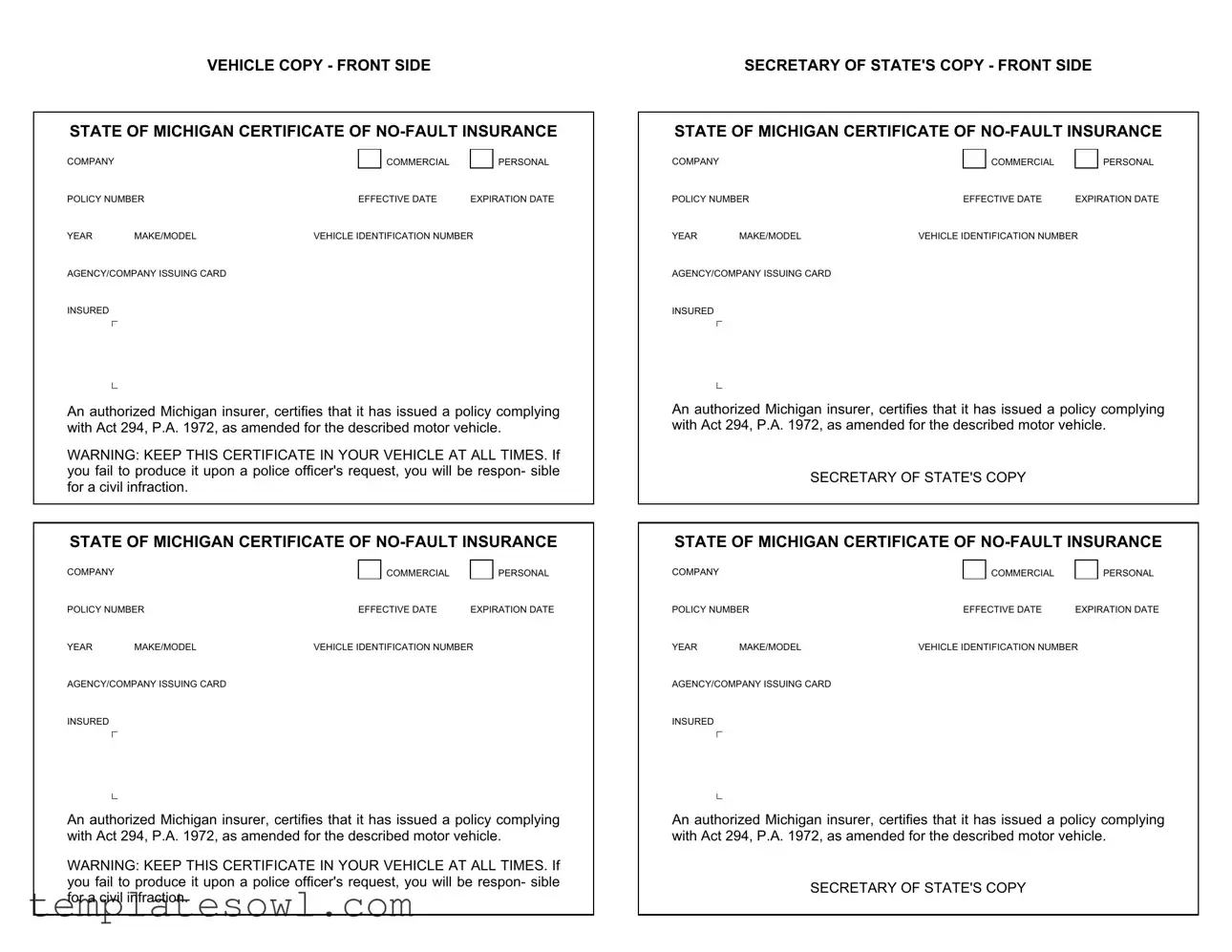What is the Michigan No Fault Insurance form?
The Michigan No Fault Insurance form is a document that certifies a vehicle owner's compliance with the state's no-fault insurance law. This form is issued by authorized insurers and must include essential information such as the policy number, effective date, expiration date, vehicle make and model, and the insurer's details. It serves as proof that a motor vehicle is insured under the no-fault insurance system, which is mandated by Michigan law.
Why is it important to keep the No Fault Insurance form in my vehicle?
This certificate must be kept in your vehicle at all times. If requested by a police officer, failure to present it can result in a civil infraction. This means you might have to pay a fine and could face other repercussions. Keeping the form handy ensures that you can demonstrate compliance with Michigan's insurance requirements during any traffic stop or accident investigation.
What happens if I do not have the No Fault Insurance form in my vehicle?
If you fail to produce the No Fault Insurance form when requested by law enforcement, you will be liable for a civil infraction. This could lead to fines and complications regarding your vehicle's insurance status. It’s crucial to avoid this by ensuring the form is always accessible in your vehicle.
What information is included on the No Fault Insurance form?
The form contains several key pieces of information, including the vehicle's identification number (VIN), the year, make, and model of the vehicle, the policy number, and the coverage effective and expiration dates. Additionally, it indicates the name of the issuing insurance agency, ensuring that all the necessary details are readily available and verifiable.
Can I use my No Fault Insurance form for other vehicles?
No, the No Fault Insurance form is specific to the vehicle it describes. Each form is tied to a particular policy and vehicle identification number. If you own multiple vehicles, you will need separate forms for each one to adhere to Michigan's no-fault insurance laws.
What penalties exist for driving without proper insurance in Michigan?
Driving without the required no-fault insurance is considered a misdemeanor in Michigan. Penalties can include a fine ranging from $200 to $500, and even potential imprisonment for up to one year. The law is strict, emphasizing the importance of maintaining valid insurance at all times.
What should I do if I lose my No Fault Insurance form?
If you misplace your No Fault Insurance form, it’s crucial to contact your insurance provider immediately. They can provide you with a replacement certificate. Ensure you have the new form with you in your vehicle as soon as possible to avoid potential legal issues.
Is it possible to face legal trouble for providing false information on the No Fault Insurance form?
Yes, providing false information on the No Fault Insurance form is a serious offense. It can lead to being charged with a misdemeanor, punishable by imprisonment of up to one year or a fine of up to $1,000. It is essential to provide accurate information when obtaining this form to avoid these legal consequences.


